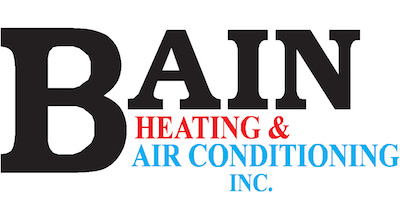It’s always nice when we manage to save money on our utility bills, but you should know there’s a way to keep costs down, even when you’re out of the house.
It starts with your thermostat. By making the most out of your thermostat, you can help the thermostat plan for your preferred temperatures. That means you can have different temperature settings for when you’re at home, away or even when you’re asleep.
By trying a few of these schedules, you can enjoy comfy temperatures while also keeping more of your money. Take a look at a few ways your thermostat doesn’t have to use up all your summer spending money:
While at Home
Whenever you’re at home, you want to enjoy a comfortable temperature. For the most part, you probably have your thermostat lower in the summer while inside to make the most of the cool air.
But in terms of energy efficiency, the best range for the summer is actually around 78 and 80 degrees Fahrenheit. With this adjustment, you’ll keep cool while still lowering your monthly energy bill.
While Away
When it comes to setting the temperature for whenever you’re gone, it’s extremely common to move the thermostat higher for while they’re gone.
Depending on the local climate or your home’s location, you can set the temperature as high as 88 degrees while no one is home before lowering it back to the sweet spot of 78-80 degrees when you or a family member return. This way, your air conditioning unit won’t be working overtime to cool an empty house.
While Asleep
For a full night’s rest during summer weather, you want your thermostat set at a comfortable temperature. You should try and keep things between 68-72 degrees Fahrenheit. There’s less risk of getting too hot or too cold when you are trying to get some rest.
Other Strategies for Lowering Energy Use:
- Smart thermostat installation: Trying a smart thermostat in the summer is an excellent way to reduce energy costs since it can plan your temperature adjustments according to your lifestyle and home environment. They can lower the temperature while you are home or sleeping, before allowing it to get warmer when no one is around. Using reputed brands and models such as the Lennox iComfort, you can adjust the temperature remotely through your smartphone, tablet or laptop. Planning smart thermostat installation in your Heflin home can be the simplest strategy for maintaining comfortable, yet energy-efficient temperatures no matter where you are.
- Replace current equipment with a newer HVAC system: A high-efficiency HVAC system saves money right from the start. With greater energy efficiency, lower utility bills won’t be far behind since it requires less energy to reach your preferred temperatures. Air conditioning installation in Heflin is only a phone call away, so don’t hesitate to reach out to local pros like Bain Heating & Air Conditioning who can set you up for success.
- Schedule annual AC maintenance: Hiring a skilled professional to perform regular air conditioning maintenance in Heflin can have a big impact on your monthly energy use. If you stay on top of cleaning key components like the coils, checking for damage and keeping vents clear of dust and debris, you may notice your HVAC system perform better during day-to-day use.. Increasing efficiency also limits strain on key parts and lowers operational costs, leading to lower energy usage, which translates into lower energy bills.
- Replace your air filter regularly: Regularly changing the air filters in your HVAC system saves money by improving airflow. When filters are old and less effective, air conditioners have to work harder, and the added strain may impact the system’s life span and result in breakdowns.
- Check if you have enough insulation in the attic: Insulation is one of the key components in any energy-efficient home, keeping the hot air outside and the cool air inside through summer. The North American Insulation Manufacturers Association (NAIMA) recommends that homes in the southern United States should install at least 13-14 inches of insulation, while those in northern U.S. states should have 16-18 inches.
- Check your ductwork: Damage to the ventilation is capable of increasing your energy bills much more than 20 percent, plus it can potentially allow harmful emissions from your water heater, clothes dryer and other appliances throughout your home. Checking your ductwork for leaks and sealing them can address both concerns.
- Seal all other leaky spots in your home: Finding and sealing any remaining leaks in your home with caulk, foam sealant or weather-stripping helps keep things cooler during those hot summer days. It’s also important to check for any gaps around windows, doors and even outdoor fixtures. Taking the time to seal up any leaks now can help you save a lot in the long run.


